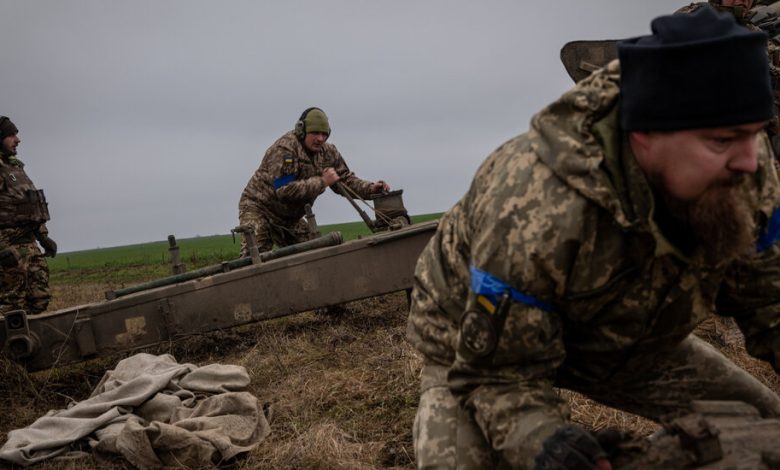As Ukraine awaits promised tanks from the West, the fighting continues.

The fall of the small mining town of Soledar to Russian forces on Wednesday drove home Ukraine’s argument that it will need Western tanks the United States and Europe recently promised to send to counter an expected Russian assault this spring.
The escalation in fighting by the Russians was part of the calculation that led to pledges by Germany and the United States on Wednesday that they would send tanks to Ukraine, freeing other European countries to send their own. But tanks move slowly. Experts predict that the coveted German-made Leopard 2 tanks might arrive in a couple of months, just as ground offensives from both sides could be underway.
“The key thing now is speed and volume,” President Volodymyr Zelensky of Ukraine said in his nightly address on Wednesday. “The speed of training of our military, the speed of supplying tanks to Ukraine. The volume of tank support.”
The number of tanks — an initial 14 Leopard 2 tanks from Germany and 31 M1 Abrams tanks from the United States — is modest but ended weeks of tense negotiations. It also cleared the way for other nations that have now pledged to send their own Leopards: Poland, Portugal, Norway, Spain, Finland and the Netherlands. Britain had already said that it would send 14 of its Challenger 2 tanks.
On Thursday, Poland’s prime minister, Mateusz Morawiecki, said in an interview on French television that his country would send 60 more modern tanks to Ukraine in the coming weeks, in addition to 14 of the Leopard tanks. The Poles have already contributed 250 tanks to the Ukrainian war effort, he said.
The State of the War
- Military Aid: Germany and the United States announced they would send battle tanks to Ukraine, a decision that came after weeks of tense back-channel negotiations between Western officials. But it may be months before the tanks rumble across the battlefield.
- Corruption Scandal: After a number of allegations of government corruption, several top Ukrainian officials were fired, in the biggest upheaval in President Volodymyr Zelensky’s government since Russia’s invasion began 11 months ago.
- An Expanding Cemetery: Recent satellite imagery and video footage of a growing burial ground offer a rare look at combat fatalities sustained by the Wagner mercenary group during the war.
President Emmanuel Macron of France asked his defense minister to look into sending Leclerc tanks to Ukraine but “no decision has been made, and no decision has been ruled out,” Catherine Colonna, France’s foreign minister, said during a visit to Ukraine on Thursday.
“We are in a constant dialogue with the Ukrainian authorities to know what their needs are,” she said, adding that the priority at this stage was to provide anti-air defenses.
The Leopard 2s will be a serious upgrade over the Soviet-era tanks being used by Ukraine, but questions remain about how quickly they can arrive and how much they could affect the war. Ukrainian military officials have long said they need at least 300 modern tanks to make a difference in the war, though experts have said the Ukrainians need 500 to 1,000.
Still, the tanks represent a change in thinking among U.S. and European leaders who once feared that sending their most advanced weapons could provoke Moscow to widen the war and trigger a nuclear conflict. And it was hastened by the Ukrainians’ success on the battlefield in the fall, when they retook vast chunks of territory in the northeast and southeast, turning the tide of the war.
“This is a substantial shift for NATO and the U.S. moving away from supporting the Ukrainians so they’re not defeated toward a status where they can win,” said Mick Mulroy, a former Pentagon official and C.I.A. officer.
The capture of Soledar is the first significant victory for Russian ground forces in months and brings them closer to encircling Bakhmut in the eastern region of Ukraine, known as the Donbas.
On Wednesday, Ukrainian defense officials reported intense fighting near Bakhmut and Vuhledar, which is in the same region.
The Russians took note of the decision to send tanks, though there were no threats of using a tactical nuclear weapon, as had once been feared.
Dmitri Peskov, the Kremlin spokesman, said the tanks would be a “losing scheme” that would burden Europe without strengthening the Ukrainian military, warning that the tanks would “go up in flames.”
Aurelien Breedencontributed reporting from Paris.